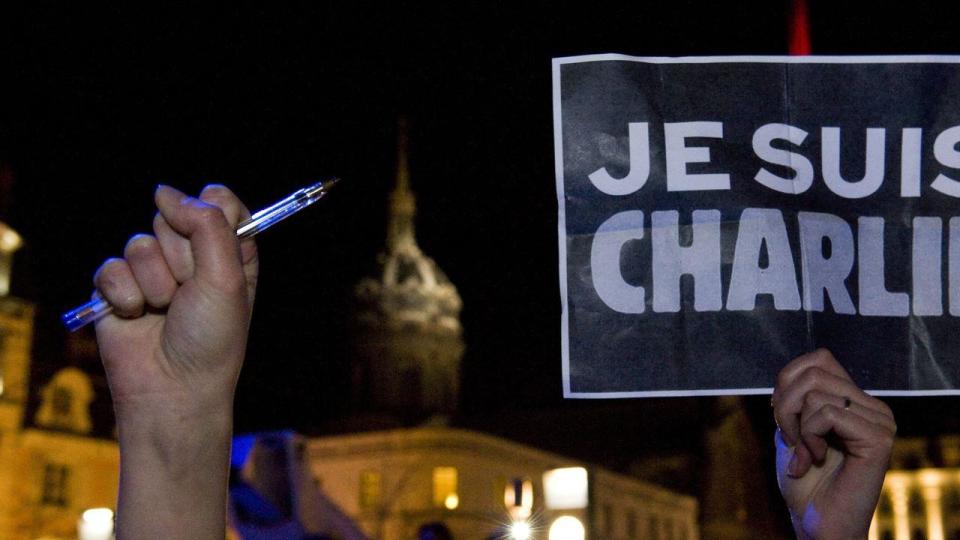Charlie Hebdo tragedy: A look back at the history of Muhammad and satire
The world was horrified Wednesday when terrorists murdered 12 people at the office of a newspaper that had caricatured the Prophet Muhammad.
Charlie Hebdo, the French publication targeted in the attack, is not alone in having received threats and even violence for drawing the founder of Islam.
In the past decade alone, cartoonists for newspapers and the animated series “South Park” have been involved in high-profile controversies over their depictions of the prophet.
Jyllands-Posten
In 2005, Danish newspaper Jyllands-Posten faced multiple threats of violence after publishing 12 caricatures of Muhammad. Authorities in Denmark foiled plans to attack the newspaper and murder cartoonist Kurt Westergaard.
Flemming Rose, editor of the paper, was not surprised when — two years later — three men were arrested on suspicion of plotting Westergaard’s death.
“This is a global struggle for the right to free speech, which is going on every day in different parts of the world where people are trying to intimidate and silence those who are critical of religion, of authoritarian regimes and movements trying to undermine free speech,” Rose told Der Spiegel at the time.
After the attack in Paris Wednesday, Jyllands-Posten swiftly voiced its support for the targeted paper.
“Charlie Hebdo was among the magazines that showed the most solidarity with Jyllands-Posten when the Muhammad crisis was at its peak. We haven’t forgotten that. Here at Jyllands-Posten, we feel strongly for our colleagues in Paris,” the newspaper said in an editorial.
‘South Park’
The Jyllands-Posten incident inspired Trey Parker and Matt Stone, the creators of “South Park,” to write their “Cartoon Wars Part II” episode featuring the prophet the following year.
The animated series already included the prophet in a 2001 episode called “Super Best Friends” without much backlash, if at all. In the episode, Muhammad is shown teaming up with Jesus, Buddha, Moses, Krishna and other major religious figures.
But after the Danish controversy, Comedy Central did not approve of their use of Muhammad, reportedly worried about a potential public safety issue.
Parker and Stone, displeased with the network’s reaction, incorporated the channel’s censorship into the story.
In 2010, the plot of the show’s 200th and 201st episodes once again focused on the prophet and was censored by Comedy Central.
A radical group called Revolution Muslim, in a post on their website, warned Parker and Stone that they would “probably wind up like [Dutch filmmaker] Theo Van Gogh,” who was killed in 2004 by a Muslim extremist, if they depicted Muhammad again, BBC News reported.
‘Everybody Draw Mohammed Day’
To support “South Park” and the First Amendment, cartoonist Molly Norris, who illustrated for Seattle Weekly, called for everyone to draw a picture of Muhammad.
“Everybody Draw Mohammed Day,” sponsored by Citizens Against Citizens Against Humor, started a Facebook page for tens of thousands of supporters to post their images of the prophet.
The Facebook group drew significant attention and anger from radical Muslims. FBI security specialists advised Norris to change her name and go into hiding, Seattle Weekly announced.
“She is, in effect, being put into a witness-protection program — except, as she notes, without the government picking up the tab,” the paper said. “It’s all because of the appalling fatwa issued against her this summer, following her infamous ‘Everybody Draw Mohammed Day’ cartoon.”
Wikipedia
In 2008, some Muslims protested the inclusion of Muhammad depictions on the English-language edition of Wikipedia.
But the free online encyclopedia refused to remove medieval artistic representations of the prophet and suggested that anyone who dislikes the images can simply adjust their browser so they do not appear, the Guardian reported.
Wikipedia’s editors released a statement acknowledging that some cultural traditions within Islam prohibit illustrations of Muhammad but that this is not universal.
“Since Wikipedia is an encyclopedia with the goal of representing all topics from a neutral point of view, Wikipedia is not censored for the benefit of any particular group,” the statement reads.
“So long as they are relevant to the article and do not violate any of Wikipedia’s existing policies, nor the law of the U.S. state of Florida where Wikipedia’s servers are hosted, no content or images will be removed because people find them objectionable or offensive.”
The Associated Press contributed to this report.




